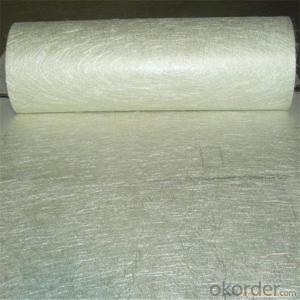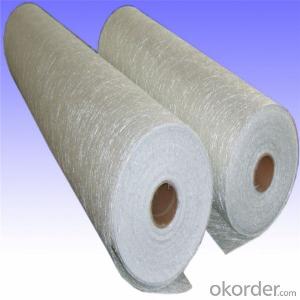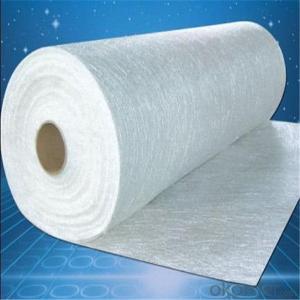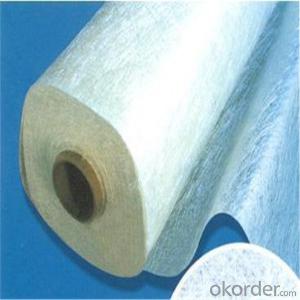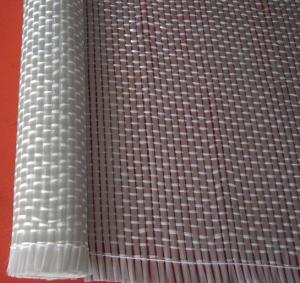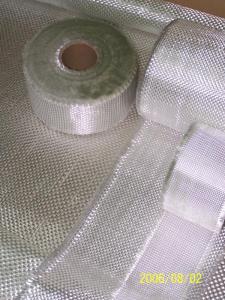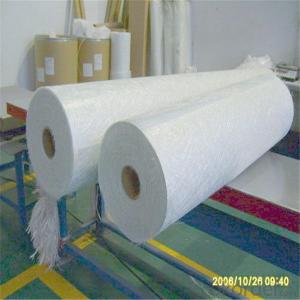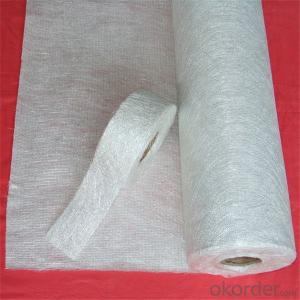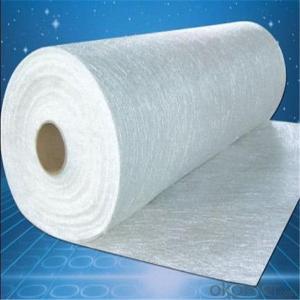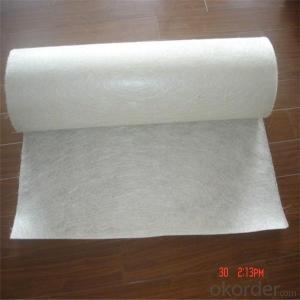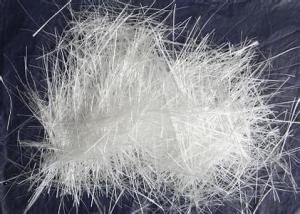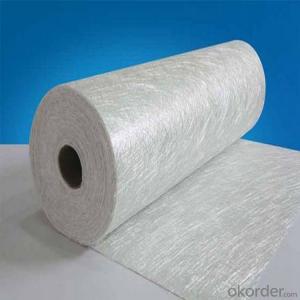Fiberglass Stand Mat Factory for Fiberglass Panel
- Loading Port:
- Tianjin
- Payment Terms:
- TT OR LC
- Min Order Qty:
- 100 m.t.
- Supply Capability:
- 20000 m.t./month
OKorder Service Pledge
Quality Product, Order Online Tracking, Timely Delivery
OKorder Financial Service
Credit Rating, Credit Services, Credit Purchasing
You Might Also Like
Quick Details
| Technique: | Chopped Strand Fiberglass Mat (CSM) | Dimensions: | 450gsm | Mat Type: | Continuous Filament Mat |
| Fiberglass Type: | E-Glass | Softness: | softness | Place of Origin: | Jiangxi, China (Mainland) |
| Brand Name: | cnbm | Model Number: | 450gsm | color: | white |
| fiberglass type: | E glass | product: | e-glass powder chopped stand mats | binder: | powder or emulsion |
| width: | 1040 or 1270mm, as your requirement | weight: | 30 or 45kg/roll | paper tube diameter: | 90mm |
| outer diameter of roll: | 256mm | packing: | plastic film+carton box + pallet |
Packaging & Delivery
| Packaging Details: | plastic film+carton box + pallet |
| Delivery Detail: | 15-20days |
Specifications
1.e-glass powder chopped stand mats
2.binder:power or emulsion
3.width:1040mm or 1270mm
4.weight:450gsm
Picture
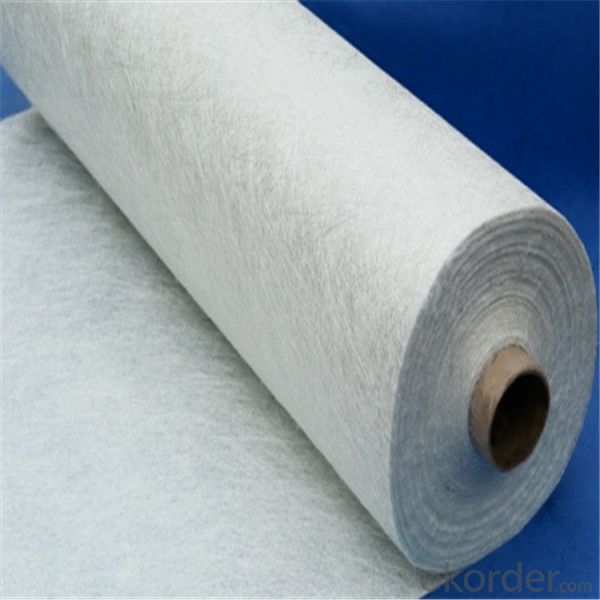
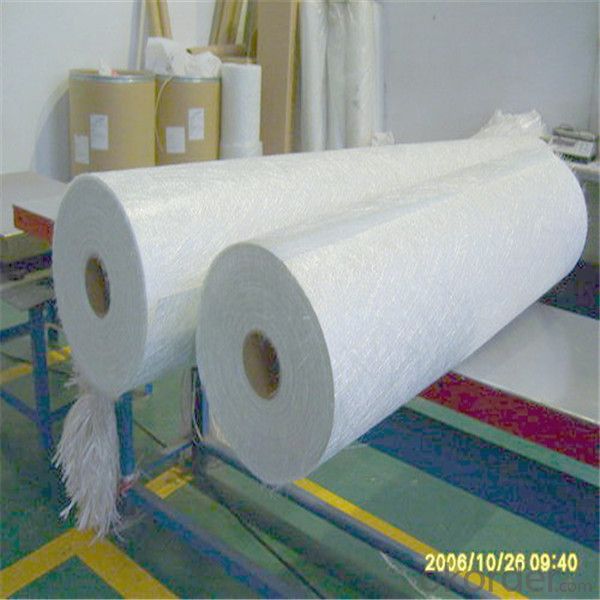
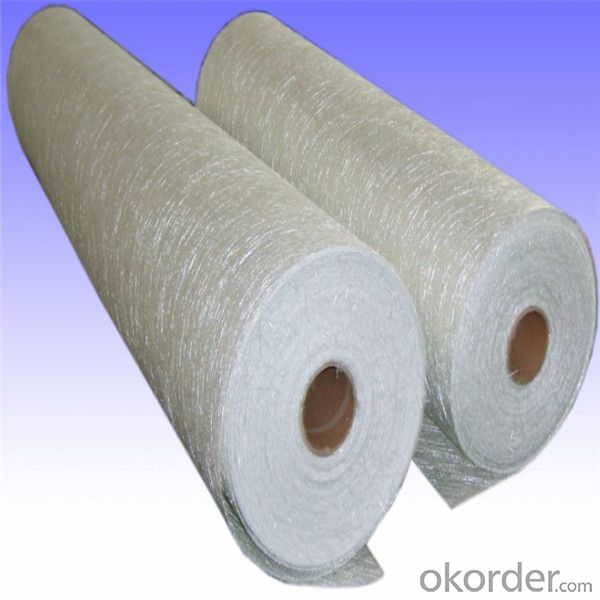
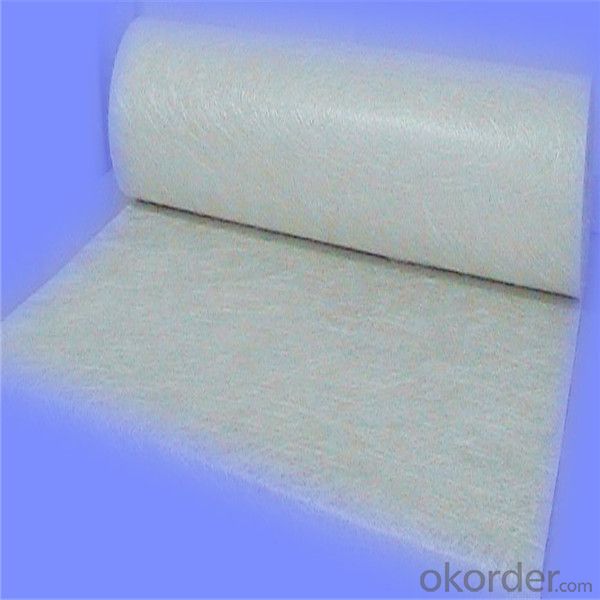
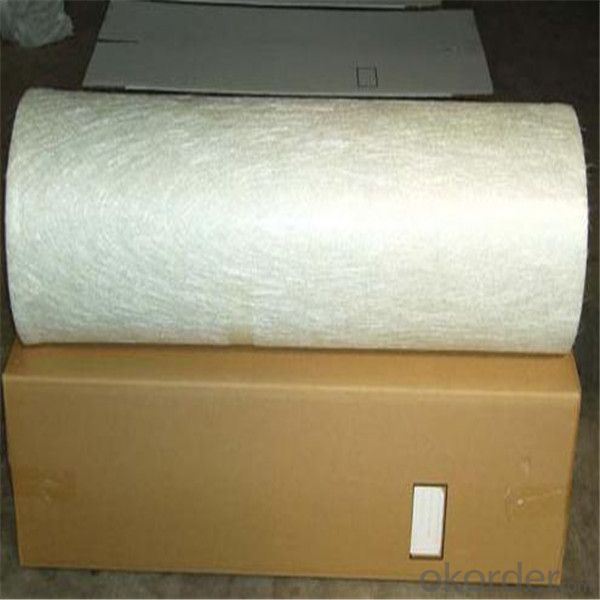
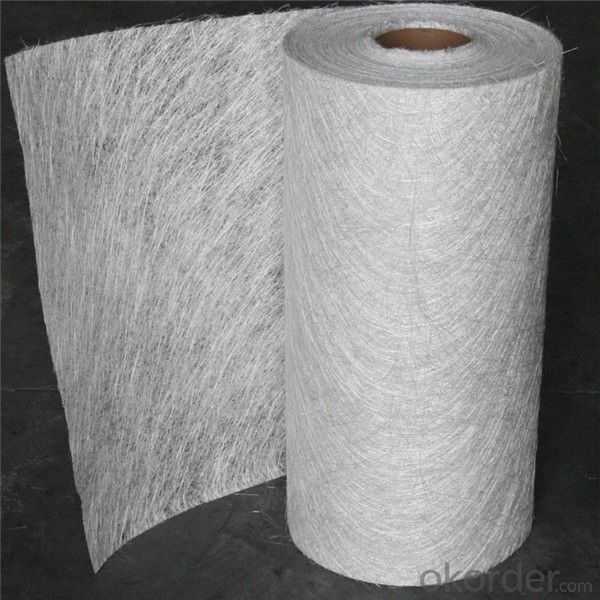
- Q:How does the fiber aspect ratio affect the properties of fiberglass chopped strand?
- The fiber aspect ratio has a significant impact on the properties of fiberglass chopped strand. Aspect ratio refers to the ratio of the length of the fiber to its diameter. A higher aspect ratio means that the length of the fiber is greater in proportion to its diameter. This results in a higher strength-to-weight ratio and improved mechanical properties of the fiberglass chopped strand. Fibers with higher aspect ratios provide better reinforcement to the matrix material, as they can distribute loads more effectively. Additionally, a higher aspect ratio contributes to improved tensile strength, stiffness, and impact resistance of the fiberglass chopped strand. The longer fibers can withstand higher stresses and strains before failure, making the material more durable and resistant to damage. On the other hand, a lower aspect ratio leads to reduced mechanical properties. Fibers with shorter lengths and larger diameters do not provide as much reinforcement to the matrix material, resulting in lower strength and stiffness. The material may be more prone to cracking, delamination, and failure under stress. In summary, the fiber aspect ratio plays a crucial role in determining the properties of fiberglass chopped strand. A higher aspect ratio leads to improved strength, stiffness, and impact resistance, while a lower aspect ratio results in reduced mechanical properties. Manufacturers and engineers consider the desired properties of the final product when selecting the appropriate fiber aspect ratio for the application.
- Q:How does the fiber diameter affect the performance of chopped strand composites?
- The fiber diameter of chopped strand composites affects their performance in several ways. Firstly, a smaller fiber diameter allows for better dispersion within the matrix, leading to improved mechanical properties such as tensile strength and stiffness. Smaller diameter fibers also have a larger surface area, enhancing the interfacial bonding between the fibers and the matrix, resulting in increased strength and durability. Furthermore, smaller diameter fibers can be packed more densely, leading to a higher fiber volume fraction and improved load-bearing capacity. However, excessively small fiber diameters can also lead to increased processing difficulties and decreased impact resistance. Therefore, finding an optimal fiber diameter is crucial for achieving the desired performance in chopped strand composites.
- Q:How does the impact resistance of fiberglass chopped strand compare to other reinforcing materials?
- The impact resistance of fiberglass chopped strand is generally higher compared to other reinforcing materials. This is due to the inherent strength and flexibility of fiberglass, which allows it to withstand impacts without fracturing or breaking. Additionally, the random orientation of the chopped strands in the fiberglass matrix helps distribute and absorb impact forces more effectively. This makes fiberglass a preferred choice for applications where impact resistance is a critical requirement.
- Q:What are the typical reinforcements used in combination with fiberglass chopped strand?
- The typical reinforcements used in combination with fiberglass chopped strand include various types of resins, such as polyester, vinyl ester, and epoxy. These resins are commonly used to impregnate the fiberglass chopped strand and provide added strength and durability to the composite material. Additionally, other reinforcements such as carbon fiber, aramid fiber, or natural fibers like flax or hemp can also be used in combination with fiberglass chopped strand to enhance specific properties of the composite, such as increased stiffness, impact resistance, or weight reduction. Overall, the choice of reinforcements depends on the desired characteristics and performance requirements of the final product.
- Q:Does fiberglass chopped strand improve the chemical resistance of composite materials?
- Yes, fiberglass chopped strand can improve the chemical resistance of composite materials. Fiberglass is known for its excellent chemical resistance properties, as it is inert and does not react with most chemicals. When added as a reinforcement in composite materials, such as in fiberglass-reinforced plastics (FRPs), the chopped strand enhances the overall chemical resistance of the composite. The chopped strand reinforces the composite matrix, providing it with increased strength and durability. This reinforcement helps to prevent the penetration and absorption of chemicals, making the composite material more resistant to chemical attacks. Additionally, the fiberglass chopped strand can act as a barrier, preventing the chemicals from reaching the underlying layers of the composite and causing damage. The chemical resistance of composite materials can be further improved by selecting the appropriate type and sizing of the fiberglass chopped strand. Different types of fiberglass, such as E-glass, S-glass, and boron fibers, offer varying levels of chemical resistance. Additionally, the sizing or coating applied to the chopped strand can also enhance its chemical resistance properties. However, it is important to note that while fiberglass chopped strand can improve the chemical resistance of composite materials, it does not make them entirely impervious to all types of chemicals. Certain aggressive chemicals, such as strong acids or bases, may still cause damage to the composite even with the addition of fiberglass chopped strand. Therefore, it is essential to consider the specific chemical environment in which the composite will be used and select the appropriate materials and reinforcements accordingly.
- Q:Can fiberglass chopped strand be used in wind turbine rotor blades?
- Yes, fiberglass chopped strand can be used in wind turbine rotor blades. Fiberglass is a commonly used material in the manufacturing of rotor blades due to its high strength, lightweight properties, and ability to withstand harsh weather conditions. Chopped strand is often added to the resin matrix to enhance the mechanical properties and improve the overall performance of the rotor blades.
- Q:How is the chemical resistance of fiberglass chopped strand determined?
- Various tests and assessments are employed to determine the chemical resistance of fiberglass chopped strand. The immersion test is a commonly used method whereby the chopped strand is subjected to different chemicals for a specific duration. Subsequently, a visual inspection is conducted to detect any signs of degradation or damage. Another approach to ascertain the chemical resistance is through the weight loss test, whereby the chopped strand is weighed both before and after exposure to chemicals. Any notable weight loss indicates that the strand is being influenced by the chemicals. Moreover, mechanical testing can also be carried out to evaluate the impact of chemicals on the physical properties of the chopped strand. This encompasses testing the tensile strength, flexural strength, and impact resistance of the strand prior to and following chemical exposure. Overall, the chemical resistance of fiberglass chopped strand is determined by a combination of visual inspection, weight loss analysis, and mechanical testing. These tests furnish valuable information regarding the performance and durability of the chopped strand in diverse chemical environments.
- Q:How does the curing time of fiberglass chopped strand-reinforced composites compare to other reinforcing materials?
- The curing time of fiberglass chopped strand-reinforced composites is generally shorter compared to other reinforcing materials. This is due to the unique properties of fiberglass, such as its ability to conduct heat more efficiently and its faster reaction to curing agents. In comparison to other reinforcing materials like carbon fiber or Kevlar, fiberglass composites tend to cure faster. This is beneficial in various industries where time efficiency is crucial, such as automotive, aerospace, and construction. The shorter curing time allows for quicker production cycles and faster turnaround times. However, it is important to note that the curing time can vary depending on the specific resin system used, the thickness of the composite, and the curing conditions. Different resin systems and composite configurations may require longer or shorter curing times to achieve optimal strength and performance. Overall, fiberglass chopped strand-reinforced composites offer a distinct advantage in terms of curing time when compared to other reinforcing materials, making them a preferred choice in many applications.
- Q:Can fiberglass chopped strand be recycled?
- Yes, fiberglass chopped strand can be recycled. It can be processed and used in various applications such as the production of new fiberglass products or as a filler material in composite materials. Recycling fiberglass chopped strand helps to reduce waste and conserve resources.
- Q:How is the fire resistance of fiberglass chopped strand determined?
- The fire resistance of fiberglass chopped strand is determined through a series of standardized tests and evaluations. The most common method used is the ASTM E84 test, also known as the Steiner Tunnel test. This test measures the surface burning characteristics of materials by evaluating their flame spread and smoke development. During the test, a fiberglass chopped strand sample is exposed to a controlled flame and the flame spread rate is measured. The test also assesses the amount of smoke generated during the burning process. Based on the results, the material is assigned a Class rating, ranging from Class A (the highest fire resistance) to Class C (the lowest fire resistance). In addition to the ASTM E84 test, other tests such as the UL 94 test can be used to determine the fire resistance of fiberglass chopped strand. This test evaluates the material's ability to self-extinguish after being exposed to a small flame. The test results in a V rating, with V-0 indicating the highest fire resistance and V-2 indicating the lowest fire resistance. These standardized tests provide a reliable and consistent way to determine the fire resistance of fiberglass chopped strand, ensuring that it meets the required safety standards for various applications.
1. Manufacturer Overview |
|
|---|---|
| Location | |
| Year Established | |
| Annual Output Value | |
| Main Markets | |
| Company Certifications | |
2. Manufacturer Certificates |
|
|---|---|
| a) Certification Name | |
| Range | |
| Reference | |
| Validity Period | |
3. Manufacturer Capability |
|
|---|---|
| a)Trade Capacity | |
| Nearest Port | |
| Export Percentage | |
| No.of Employees in Trade Department | |
| Language Spoken: | |
| b)Factory Information | |
| Factory Size: | |
| No. of Production Lines | |
| Contract Manufacturing | |
| Product Price Range | |
Send your message to us
Fiberglass Stand Mat Factory for Fiberglass Panel
- Loading Port:
- Tianjin
- Payment Terms:
- TT OR LC
- Min Order Qty:
- 100 m.t.
- Supply Capability:
- 20000 m.t./month
OKorder Service Pledge
Quality Product, Order Online Tracking, Timely Delivery
OKorder Financial Service
Credit Rating, Credit Services, Credit Purchasing
Similar products
New products
Hot products
Hot Searches
Related keywords
